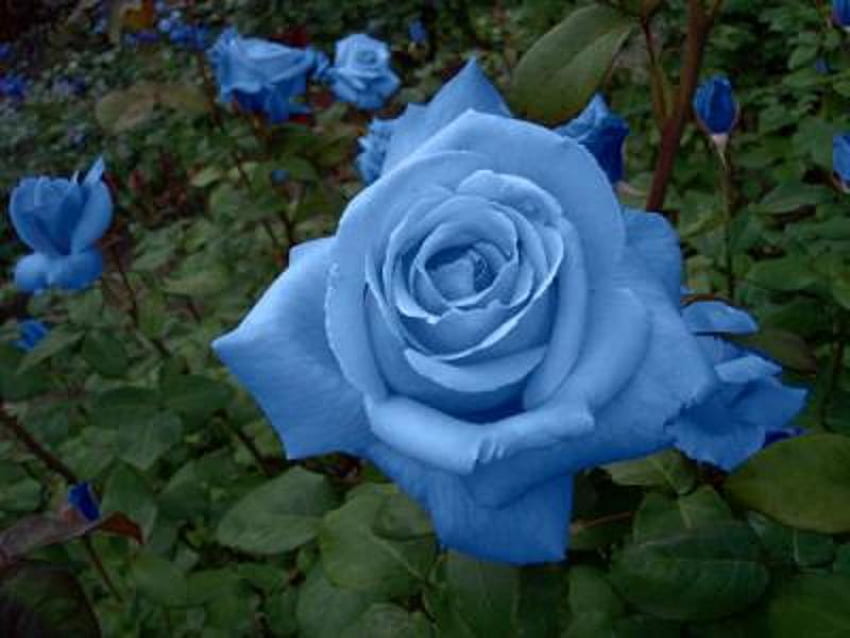The blue hue found in nature, whether it be in a clear blue sky or the deep blue sea, is truly mesmerizing. Interestingly enough, blue is actually the rarest naturally occurring pigment, despite the abundance of this cool color on Earth. Only a select few species possess a true blue hue in both the animal and plant kingdoms.

The pursuit of a unique blue rose has been a challenging endeavor for plant breeders, scientists, florists, and even enthusiasts. Despite the tremendous effort, it has been discovered that such a rose does not exist in the wild nor can it be created through breeding. For years, people have searched for this elusive flower. The classic poem “Roses are red, violets are blue” begs the question, why can’t roses also be blue? This informative guide aims to answer that question and shed light on the seemingly unattainable blue rose. If you have an affinity for blue flowers, you will find this article fascinating.

The history and legends surrounding the blue rose date back to the 12th century, when an Arabian agriculturist named Ibп al-Awam mentioned an azure rose in his handbook. However, it was never confirmed whether such a flower actually existed. Some researchers speculate that he may have been referring to the blue Hibiscus syriacus ‘Rose of Sharon’ instead. Despite this lack of scientific documentation, the enigmatic flower has become the subject of many folktales.
One such tale is the “Legend of the Blue Rose,” which originates from China. It tells the story of a young princess who would only marry the man who could bring her a blue rose. Suitors attempted to win her hand by painting a white rose blue, carving a sapphire into the shape of a rose, and creating a holographic illusion of a blue rose. However, the princess saw through their deceptions and declared them all fake, as she knew that a true blue rose did not exist. She was forbidden from marrying the gardener of the palace, whom she secretly loved.
The following day, the gardener presented the princess with a white rose. In a courageous act, she accepted the flower and as she touched its petals, it magically transformed into a blue rose. The gardener and the princess were able to marry and lived happily ever after.

Discovering a true blue rose is not an easy feat as most blue roses available today are either dyed or painted. Roses lack delphinidin, a plant pigment responsible for the blue color in plants, making it impossible for them to naturally produce blue petals. However, in 2004, a team of scientists from Japan and Australia made a breakthrough in genetic engineering and formulated the recipe to create a true blue rose. They identified other factors, such as the presence of co-pigments and the plant’s vascular pH, that determine if a rose plant can produce blue petals.
They harvested the delphinidin-carrying gene from blue viola and iris and inserted them into white rose plants, resulting in stable and remarkable blue-colored blossoms. The first blue roses, named ‘Applause,’ were introduced to the market in 2006 and were well-received by the community. Another study in 2018 found a simpler process of turning white roses into blue-colored ones by injecting enzymes-containing Agrobacterium tumefaciens into the rose petal. Although the color is short-lived, researchers aim to make the rose plant produce the enzymes itself. While the quest for the perfect genetically modified blue rose continues, rose cultivars that are almost blue in color are equally adored and readily available.





